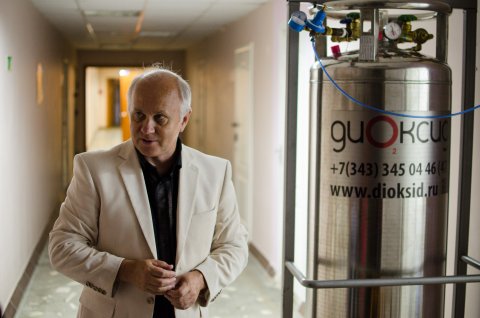Historically, mining and processing industries at the South Ural have a great influence on people’s lives and on nature. Discovery of many pyrite deposits in the 20th century resulted in intensive development of the region’s non-ferrous metal industry, which negatively influenced the environment. Scientists today are facing an important task: researching and estimating the level of technological impact in order to help solving pressing ecological problems.
Valeriy Udachin, Doctor of Geology and Mineralogy, Professor of the Geology Department of the SUSU’s Miass branch, deputy Director of the Institute of Mineralogy of the Ural branch of the Russian Academy of Sciences is researching geochemistry of the environment connected with mining industry’s technogenesis. Geochemistry is the science about chemical composition of the Earth, laws of distribution and movement of elements and isotopes in different geological mediums, formation processes of rock, soils and natural water.

“As long as the Urals, being among other things a region of pyrite deposits, is the region where sulphides (compounds of metals and sulphur) play the main role, our mining industry is quite developed. But as it happens naturally, after extraction from the depths of Earth and transfer into rock dumps after ore beneficiation, this sulphide material easily oxidizes in the rock and tailing dumps under conditions of atmosphere air and inflow of athmosphere moisture, which negatively influences the environment,” explains Valeriy Udachin.
Deposits’ recovery, as a rule, is carried out by underground or open (quarry) methods. During underground recovery, comparatively small amount of crushed rock and ore gets transferred to the surface. But even such amount is enough to break the environment’s state. After beneficiation with metals, rocks and finely dispersed material always more or less remain on the surface in the form of rock dumps or tailing dumps. At atmosphere migration, in the process of weathering and as part of acid mine drainage, such beneficiated rocks are a source of potentially toxic elements’ penetration into soil and water.

“The object of our research are soils, upper peat layers, bottom lake deposits and acid mine drainage, explains Valeriy Nikolaevich. We research in which forms the elements migrate, how they are accumulated, how they are transformed, i.e. change in time. Bottom lake deposits and upper peat layers are a good natural storage for fixating the impact on the environment.”
An important part of the research work is targeted at determining microelements’ forms of occurrence and assessment of the level of their threatening to the nature. During the research, specific methods of complex instrumental research for quantitative assessment of accumulated technogenic elements in deposit environments of the South Ural’s ecosystems were developed, This gave the scientists the opportunity to calculate how many milligrams per square meter per year transferred into such natural storages of copper, zinc, plumb, cadmium and other elements during a determined period of time.
“Besides, by the results of chemical and analytical research we determine potential biological accessibility of these elements for people. Having the selected samples of soils, of road and home dust accumulated in houses of residents, we carry out an assessment of their potential threat for health by interaction of these samples with synthetic solutions which simulate gastric acid, intestinal liquid medium and pulmonary liquid medium.”
Relevant scientific research allow for assessing risks of toxic elements’ impact on population living in the mining regions, and provide recommendations for decrease of the harmful influence.
During such research, Valeriy Udachin participated in the 5th Framework Science and Technology Program of the European Union, where he supervised research during performing the “Geochemistry of the environment” section. He was also the project leader of the 7th Framework Program of the European Union. As of today, joint research on scientific programs of the Ural branch of the Russian Academy of Sciences along with integrated, interdisciplinary and oriented fundamental research and work based on grants of the Russian Foundation for Basic Research are carried out under his supervision.
“We closely cooperate with specialists of the Natural History Museum in London, French Geological Survey in Orleans, Cluj-Napoca University in Romania, Canadian universities and many others,” shares Valeriy Nikolaevich.
Eventually, research activity of Valeriy Udachin resulted in increase of geographical coverage of researched objects. Nowadays a group of scientists conducts research in the Arctic territories (delta of the Lena river, the Taymyr peninsula). Their goal is to extend the field of knowledge in geochemistry of the environment and pass on the accumulated experience to South Ural State University students during a course of lectures on Environmental Geology and Environmental Geochemistry.




